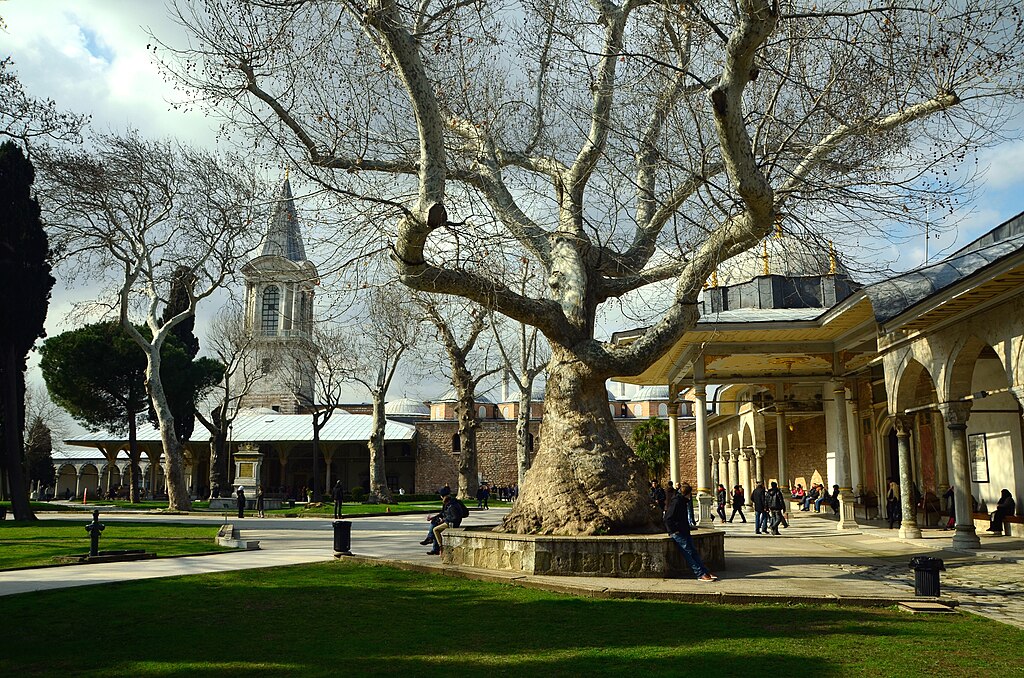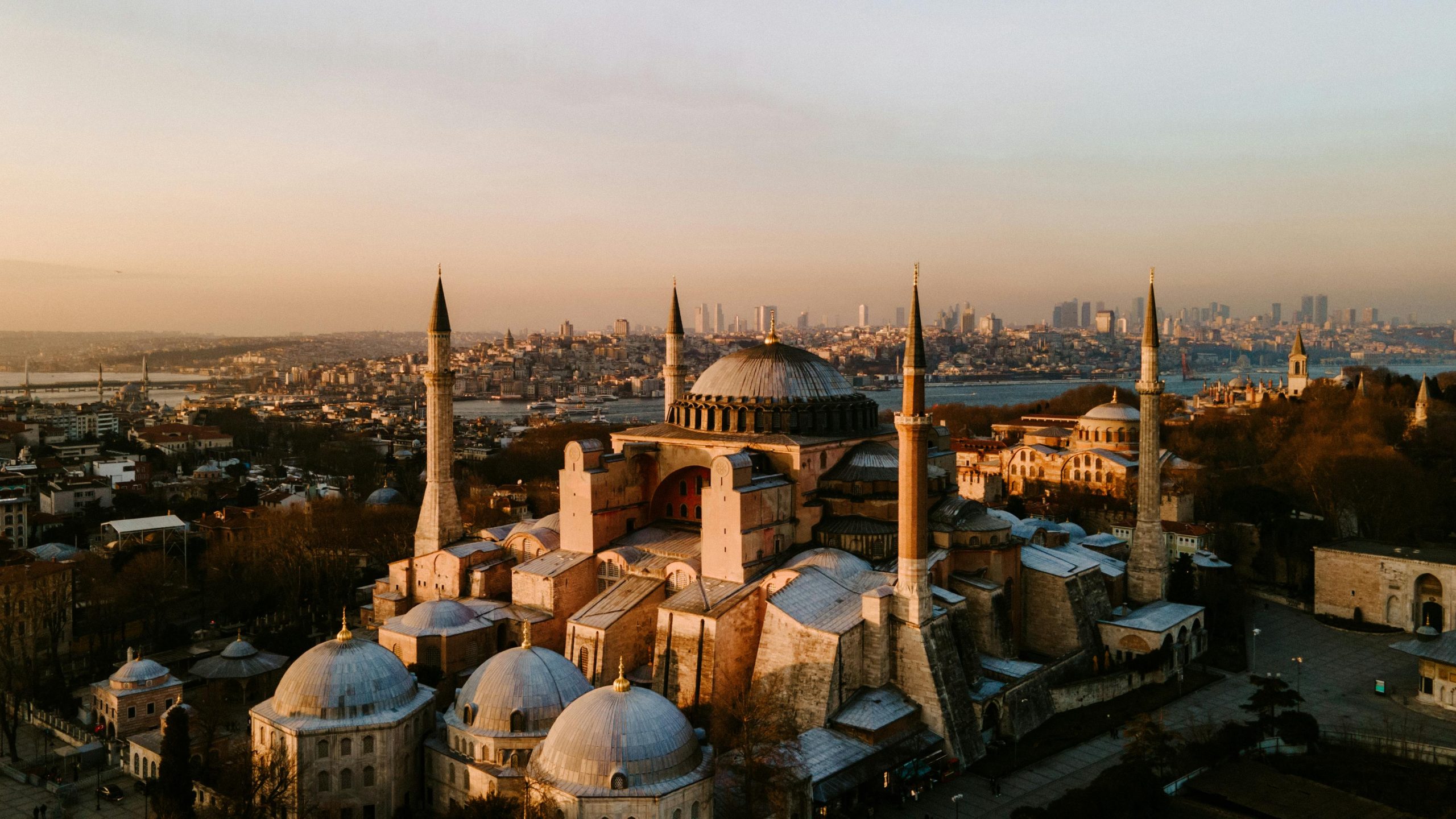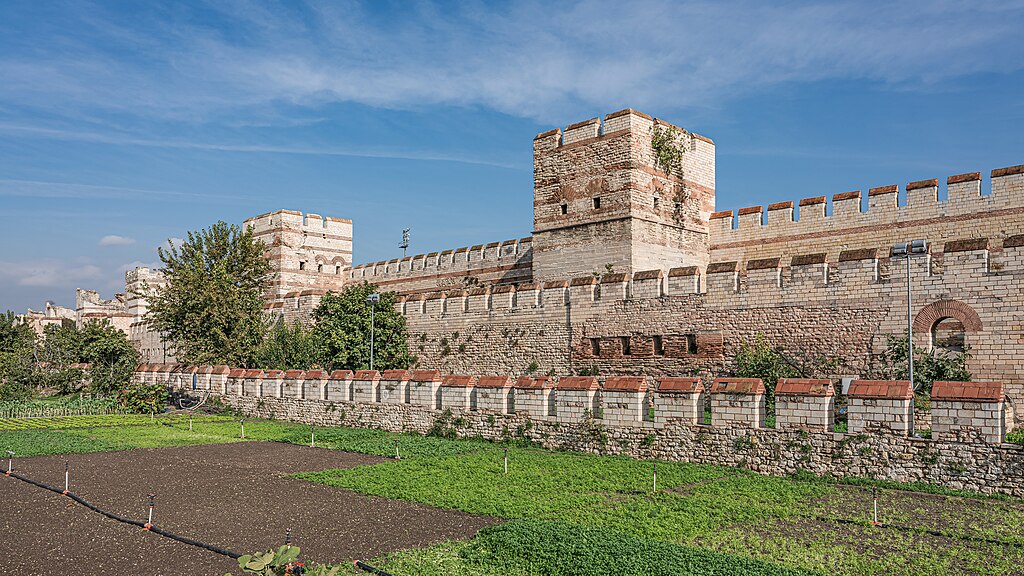Topkapi Palace, Istanbul
Palace in Istanbul

For most visitors, Topkapi Palace tops the list of things to do in Istanbul — and rightly so. Built soon after the Ottoman conquest of Constantinople in 1453, it was commissioned by Sultan Mehmed II as both the residence and administrative center of the new empire. Unlike Europe's single-structure palaces, Topkapi is a vast, open-air complex of courtyards, gardens, mosques, and pavilions, all enclosed by fortified walls. It's one of the top attractions in Istanbul and a highlight of any walking tour of Istanbul's Old Town, offering visitors an extraordinary glimpse into centuries of imperial life, ceremony, and power.
The palace stretches over 700,000 square meters on the tip of Istanbul's historic peninsula, with sweeping views over the Bosphorus Strait and Golden Horn. Within its walls are treasures and stories from across an empire that once stretched from Hungary to Arabia. From the ceremonial courtyards where sultans addressed their ministers to the opulent Harem where royal intrigues shaped politics, Topkapi Palace embodies both grandeur and mystery.
History and Significance of Topkapi Palace
Construction of Topkapi Palace began in 1459, just six years after Sultan Mehmed II captured Constantinople. Completed by the late 15th century, it served as the administrative and royal seat of the Ottoman Empire for nearly four centuries. Each sultan expanded and modified the complex, adding new sections such as the Imperial Council Chamber, the kitchens, and the Harem. At its height, the palace housed over 4,000 people, including courtiers, soldiers, and servants.
The Harem, one of the palace's most famous areas, was more than a secluded household—it was a place of influence and power. The Valide Sultan (Queen Mother) often played a key political role, especially during the “Sultanate of Women” period in the 16th and 17th centuries, when royal women shaped court decisions behind the scenes. Topkapi's importance began to wane in the 19th century when Sultan Abdulmejid I moved the royal court to Dolmabahçe Palace, yet Topkapi remained the spiritual and symbolic heart of the empire.
After the fall of the Ottoman Empire and the establishment of modern Turkey, Mustafa Kemal Atatürk converted the palace into a museum in 1924. In 1985, it was added to the UNESCO World Heritage list, securing its place as one of the must-see places in Istanbul and one of the world's most remarkable royal residences.
Things to See and Do in Topkapi Palace
Stepping through the mighty Imperial Gate brings you into the First Courtyard of Topkapi Palace, also known as the Parade Grounds — a place where ceremony and power once converged. During Ottoman times, this gate was heavily guarded and open only from morning until evening prayer. Just inside to the left stands Hagia Irene, or the “Basilica of Divine Peace,” one of Constantinople's earliest churches. Originally modeled after a Greek temple and completed in the early 4th century, it predates even Hagia Sophia. Although damaged during the Nika Revolt of 532, it was rebuilt and later enclosed within the palace walls when the Ottomans conquered the city. Remarkably, Hagia Irene was never converted into a mosque; instead, it became the palace armory and later a concert hall, prized for its exceptional acoustics.
The size of the First Courtyard is immense, stretching across the former site of the ancient Greek acropolis. Scattered among the trees, visitors can still spot remnants of this classical past — marble columns and fragments of the old city. Life here once revolved around military parades, processions, and ceremonies, and historic paintings show its grandeur during the late 1500s. The First Courtyard is open to all and free to enter, making it an ideal place to start exploring Topkapi's vast complex before heading deeper into the palace.
From the center of this courtyard rises the imposing Gate of Salutation (Bab-us Selam), which marks the transition into the Second Courtyard and the museum area. Before passing through, take a moment to look at the small Executioners' Fountain (Cellat Çeşmesi) built into the wall — a chilling reminder of Ottoman justice, where executioners would wash their hands after carrying out their duties. Once inside the Second Courtyard, you enter the heart of the Topkapi Palace Museum, which includes four main courtyards filled with treasures, relics, and architectural gems.
The Chamber of Holy Relics is among the most revered areas in the palace. Within its walls are sacred artifacts sent to the Ottoman sultans as both gifts and spoils of conquest — including the Holy Mantle and Tooth of the Prophet Muhammad, his sword, bow, and personal letters, along with relics associated with Abraham, Moses, David, and Fatimah. Among the Christian relics is the jeweled arm and skull of St. John the Baptist, adding another layer to this room's deep spiritual resonance.
Nearby, the Imperial Treasury showcases some of the most dazzling objects in the Islamic world. Highlights include the famed Topkapi Dagger, adorned with three massive emeralds and a tiny concealed clock, and the Spoonmaker's Diamond, an 86-carat masterpiece that gleams beneath the lights. Many of these treasures were diplomatic gifts or royal commissions that reflect the sultans' wealth and influence.
Another unmissable section is the Weapons Collection, one of the richest in the world. With more than 50,000 pieces spanning 1,300 years, it features exquisitely decorated arms belonging to sultans such as Mehmed II, Suleiman the Magnificent, and Selim the Grim. Each blade and bow tells a story of craftsmanship and empire. Equally captivating is the Porcelain Collection, displayed in the Imperial Kitchens, which holds over 10,000 Chinese and Japanese pieces — the largest such collection outside East Asia.
Finally, no visit would be complete without exploring the Harem and the Fourth Courtyard, with its serene pavilions and sweeping views of the Bosphorus. The Harem's labyrinth of tiled chambers and gilded domes reveals the private life of the Ottoman court, while the final terraces offer tranquility and grandeur in equal measure. Together, these sights make Topkapi one of the best places to visit in Istanbul — a palace that captures both the power and poetry of an empire that once ruled three continents.
How to Get There
Topkapi Palace is located in Sultanahmet, within Istanbul's Old City, and is easily accessible by public transport. The T1 tram line stops at Sultanahmet, a short 10-minute walk from the entrance. For those arriving by train, Sirkeci railway station is around 15 minutes away on foot. You can use the official TCDD Taşımacılık website to check schedules, compare routes, and purchase tickets for Turkey's national and regional trains operated by TCDD. For a more streamlined experience (especially if you prefer an English interface or want to compare across countries), we recommend using Omio, which allows you to easily compare prices, schedules, and book train tickets across Turkey and the rest of Europe — all in one place. Drivers can find paid parking near the Gülhane Park entrance, though spaces are limited due to pedestrianized areas. If you are looking to rent a car in Turkey I recommend having a look at Discover Cars, first, as they compare prices and review multiple car rental agencies for you.
Practical Tips on Visiting Topkapi Palace
- Best time to visit Topkapi Palace: Early morning to beat the crowds, especially for the Harem and Treasury.
- Entrance fee in Euros: Around €25 for general admission; Harem section requires an additional €10.
- Opening hours: Open daily except Tuesdays, typically from 9:00 AM to 6:00 PM.
- Official website: https://topkapisarayi.gov.tr
- How long to spend: Allow at least half a day; a full day is ideal for exploring thoroughly.
- Accessibility: Most courtyards are accessible; some historic rooms have steps.
- Facilities: Cafés, restrooms, and souvenir shops on-site.
- Photography tip: Capture the Bosphorus view from the Fourth Courtyard's terraces.
- Guided tours: Audio guides available; private tours provide deeper insight into palace life.
- Nearby food options: Traditional Turkish restaurants and tea gardens around Gülhane Park and Sultanahmet Square.
Is Topkapi Palace worth visiting?
Completely. Topkapi Palace is not only one of the top sights in Istanbul but also one of the most atmospheric royal complexes in the world. It's a place where the Ottoman Empire's grandeur, spirituality, and daily life unfold room by room. From dazzling jewels to private chambers and sweeping views, it's an experience that connects visitors directly to the empire that once ruled three continents.
FAQs for Visiting Topkapi Palace
Is Topkapi Palace open every day?
No, it's closed on Tuesdays and certain public holidays.
Is the Harem included in the main ticket?
No, the Harem requires a separate ticket purchased on-site or online.
Can you take photos inside?
Photography is permitted in most areas, but flash and tripods are restricted.
Are guided tours available?
Yes, guided and audio tours are available in several languages at the entrance.
Is there a dress code?
No strict dress code, but modest attire is recommended, especially for visiting religious relics.
Nearby Attractions to Topkapi Palace
- Hagia Sophia – The city's iconic domed masterpiece, blending Byzantine and Ottoman history.
- Blue Mosque – Known for its six minarets and dazzling blue-tiled interior.
- Basilica Cistern – An underground Byzantine reservoir with eerie columns and Medusa heads.
- Gülhane Park – Once part of the palace gardens, now a peaceful public park.
- Istanbul Archaeology Museums – A world-class collection of ancient artifacts next to the palace grounds.
The Topkapi Palace appears in our Complete Guide to Visiting Istanbul!
This website uses affiliate links which may earn a commission at no additional cost to you!
Visiting Topkapi Palace
Nearby Attractions
- Istanbul Archaeological Museum (0.2) km
Museum in Istanbul - Hagia Irene (0.3) km
Church and Museum in Istanbul - Sogukcesme Street (0.4) km
Street in no_link - Hagia Sophia (0.4) km
Cathedral and Mosque in Istanbul - Basilica Cistern (0.6) km
Historic Building in Istanbul - Hurrem Sultan Hamam (0.6) km
Baths and Historic Building in Istanbul - Stone of Milion (0.6) km
Historic Site in Istanbul - Sultan Ahmet Park (0.6) km
Park in Istanbul - German Fountain (0.7) km
Fountain in Istanbul - Arasta Bazaar (0.8) km
Bazaar in Istanbul


